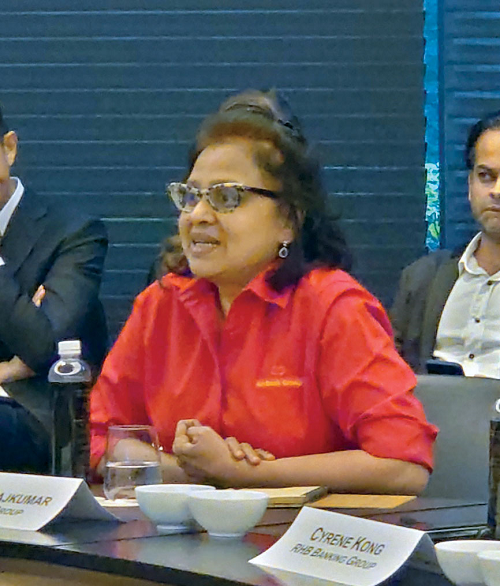At the end of April 2022, Bank Negara Malaysia granted five digital bank licences to mainly Malaysia-owned entities, out of a total of 29 applicants. Three licences were awarded under the Financial Services Act, to the consortia of RHB Bank and Boost Holdings; YTL Digital Capital and Sea Ltd; and GXS Bank and Kuok Brothers. Two other licences were given under the Islamic Financial Services Act, to KAF Investment Bank and a consortium of MoneyLion, AEON Financial Service and AEON Credit Service Malaysia.
They are expected to start operations between 12 and 24 months of receiving their licences. The successful applicants were rigorously evaluated for their character and integrity, nature and sufficiency of financial resources, soundness and feasibility of business and technology plans as well as ability to meaningfully address financial inclusion gaps. Applications were assessed on their individual merits, as well as relative to other applications based on consistent evaluations of each assessment criteria.
According to BNM governor Tan Sri Nor Shamsiah, digital-only banks are expected to further advance financial inclusion. By adopting digital technology more widely for everyday transactions, we can significantly increase opportunities for our society to participate in the economy - by overcoming geographical barriers, reducing transaction costs and promoting better financial management. They can help individuals and businesses gain better access to more personalised solutions backed by data analytics. As businesses move online, digital banking also provides a safer and a more convenient way to transact.
While Malaysia’s 23 million adult population, out of a total of 33 million, appears to be relatively well-banked, with only 15% deemed unbanked, in reality a significant 40% of them are considered underbanked. They are not well-served in financial services or have unmet needs, with no access to credit cards, are underinsured, and have no long-term savings product.
According to a study by big tech giant Google and Singapore state investment company, Temasek, revenue from digital financial services in Malaysia is expected to increase by a compound annual growth rate of 18% from $1.7 billion (MYR 7.6 billion) in 2019 to more than double to $4.7 billion (MYR 21 billion) by 2025, primarily through digital payments and lending to consumers and small and medium sized enterprises (SMEs) in the form of merchant discount rate for payments, fees and foreign exchange spread for remittances, interest charges on lending, premium on insurance, as well as sale charges and management fees for investments.
Beyond Malaysia, digital-only banks could tap into the cross-border $1 trillion digital payments market and $18 billion of digital lending revenue that Southeast Asia is expected to generate by 2025.
In its ranking of the Global Top 100 Digital-only Banks, The Asian Banker found that only 29 are profit making in 2021. Average time to profitability is between two and three years with an average return on equity (ROE) of about 16%. Those focused on personal finance and wealth management, or SME banking are among the most profitable, and slightly more than half, 55%, are in Asia. SMEs have been an underserved market due to the perception that they are high-risk with low growth potential, mainly due to the lack of visibility of their actual financial conditions. The launch of digital banks will plug the gap with their supply chain financing and innovative, easy-to-use technological solutions. One challenge that digital banks face in starting operations is often the lack of existing banking and IT capabilities for the design and implementation of their digital banking technology stack.
Existing customers and businesses versus the underbanked
Sheyantha Abeykoon, CEO of Boost, one of the newly licensed digital-only banks, described its goal as trying to address the unmet needs of the underserved segments, particularly small businesses and the retail market. “As a fintech with an ambition to offer a full spectrum of solutions to the underserved segment, the licence that came out was something that afforded us that opportunity”, he said.

Sheyantha Abeykoon, CEO,Boost
Cyrene Kong, head of digital strategy and innovation, group digital transformation of RHB Bank said that as an incumbent bank with a digital bank licence, it is doing normal banking with the convenience of the available tools. “When the digital bank licence came out, incumbent banks do not need them to operate, but we saw an opportunity to do something different”, she added.

Cyrene Kong, head of digital strategy and innovation, group digital transformation, RHB Bank
Vrinda Rajkumar, head of digital business of AmBank Group said that they did not apply for a digital bank licence since they can serve particular segments without competition. “Embedded finance is something which incumbent banks can do very well. We’ve partnered with fintechs, that’s been a very profitable growing line of business for us, the way that we can create, rather than see them as competitors”, she said.

Vrinda Rajkumar, head of digital business, AmBank Group
After four years of intense efforts and about MYR 1 billion ($212 million) of technology investments to digitalise the entire bank, AmBank Group has emerged with the digital capability and technical know-how to compete with the best fintechs, ecommerce and platforms players in Malaysia and the region. Its management has also gained the commercial finesse and confidence to work with, and bank them.
At its inaugural AMDigital Day, group CEO, Sulaiman Mohd Tahir, talked about its beyond banking initiatives, leveraging open APIs to work with ecosystem partners such as BonusLink, CapitalBay, Luno, MY E.G. Services Berhad (MYEG), Maxis, Merchantrade Asia Rakuten, Razer Merchant Services, StashAway He introduced the sponsor bank concept, where AmBank is the bank behind the ecosystem to provide know your customer onboarding, and to facilitate transaction and settlement.
As a sponsor bank, AMBank has launched 77 application programming interfaces (APIs) to support 24 digital solutions for payment service, non-bank financial service, financial infrastructure and ecommerce providers.
Zainul Abidin Bin Mustafa, head of digital banking of MBSB Bank emphasised that banks need to create digital products not just for the underbanked and underserved but most especially to their existing customers. “For us, digital banking is creating convenience to the customer from onboarding to their daily transaction.”

Zainul Abidin Bin Mustafa, head of digital banking, MBSB Bank
Rajkumar of Ambank Group emphasised that not all banks in Malaysia are aggressive in pursuing digital transformation. Incumbents have the advantage of an existing business and customer base. The challenge is how to protect their present business while exploring new areas including digitalisation. “If you want to stay relevant, you need to embrace the change”, she emphasised.
Personalisation is driven by accurate use of data
Yew Choong Chew, chief data officer, AmBank Group stated that they are enriching data to understand, identify, anticipate and personalised offers to customers.

Yew Choong Chew, chief data officer, AmBank Group
Rajkumar of Ambank pointed out that Ambank is investing heavily on placing infrastructure and putting the data first to be intelligent-driven and be able to educate people. “It’s not possible to be digital without making sure that you have your data right,” she reiterated.
Abeykoon said “It’s not really about having the data, it’s really how you understand the data.”
Securing path to profitability wand cyber safety key to success
Kong of RHB Banking Group stated that while the acceptance of standalone digital banks is gaining tractions with the issuance of digital banking licence, there are tremendous challenges involved as some may fail or give up their licences. Many considerations should be taken especially their ability to keep operational and funding cost low which will determine their path towards profitability as well as ability to manage security and technology risks, given their wholly digital operations, which they are learning along with regulators. “This healthy pushback needs to happen to make sure that banks can move faster. The regulators must ensure that the banks know how to mitigate the risks so that the security aspect is taken care of”, she said.
Embedded finance key to frictionless and seamless customer experience
Abeykoon of Boost agreed with Kong and stated that the shift of the regulators’ mindset is coming from the push of traditional banks.
He stated that the success of digital banking will vary depending on the type of models used. The best way to to cater the underserved segment is not trying to change their behaviour but by building a solution based on their existing behaviour. “About 90% of what we do is not direct lending. It’s embedded into some supply chain ecosystem. This is the kind of digital bank that I like, and that’s the quickest path to profitability,” he said.
Rajkumar of Ambank said that she also believes that the direction of digital banking is towards embedded finance, but incumbents have the opportunity to explore innovation in implementing banking as a service (BaaS).
Mustafa of MBSB Bank stated that their direction is also in embedded finance and serving their existing customer base rather than going to a different market segment. “We are not focusing on the new segment, our focus in on our current segment. For our digital journey, it is towards achieving whatever that we have planned for the next five years, rather than trying to go into another segment and experiment,” he said.
Leveraging cloud-native technology to build business and operating models
Yew of Ambank Group stated that there are a lot of challenges when it comes to technology ecosystem. Many of the financial institutions like Ambank need to operate on cloud as running on premise gave a number of challenges like update on features. “The regulatory policies of using cloud have improved and become clearer today from five years ago”, he said.
He said that the challenges in operating data is that for traditional banks like Ambank, changing processes will take time and not as fast as the new players and they need to find a way to do it quickly.
Arsalaan Ahmed, CEO of Al Rajhi Bank said some banks like Al Rajhi opt to purchase tech companies to strengthen their digital banking presence while maintaining profitability. “If you make technology and transformation a cost centre, not a profit centre, you’re going to fail. Your timeline is missed 100%. The moment you make it into a profit centre, that is different,” he said.

Arsalaan Ahmed, CEO, Al Rajhi Bank
Farilla Abdullah, group chief strategy officer of Bank Islam Malaysia, said the level of policy and technical discussions between incumbents and BNM on cloud-based digital propositions has greatly increased in recent years. “There was a very strong conviction from the board all the way down, that a bank has to be digital. The future of banking is digital. That is a component that you need to manage, together with your human resources,” she said. Bank Islam was the first bank in Malaysia to launch a cloud-native digital bank “Be U”.

Farilla Abdullah, group chief strategy officer, Bank Islam Malaysia
Megat Mohamad Faisal, head of technology division of Bank Muamalat, said the bank is still considering to go into the cloud as it pursues its digitalisation agenda. “Going into the cloud is something that we need to start thinking (about) seriously,” he said.

Megat Mohamad Faisal, head of technology division, Bank Muamalat
Ahmed and Bill Streitberg, chief information and technology officer of Hong Leong Bank, said that with only around two percent of transactions now being carried out in bank branches, there is now a point for having an “optimal number of branches to attract deposits”. Ahmed pointed out a huge difference between the cost base of a 200-branch network at $1.5 billion and spending for technology to support distribution channels at $500 million.

Bill Streitberg, chief information and technology officer, Hong Leong Bank
But Streitberg cautioned that going into cloud or being cloud native should be in line with the bank’s strategies as moving from a legacy system to being cloud native may be more costly. “Cloud native is built specifically to optimise cloud usage, meaning it’s application programming interface (API) demand-driven. And that’s actually very important when you go to cloud because people don’t talk about the cost of API,” he said.
Banks are leveraging third party collaboration to create more seamless services and drive new revenue streams.
Zarir Mohd Rawi, chief operating officer of the government-owned Bank Simpanan Nasional discussed the challenges encountered by the bank as it had just started migrating to the cloud. Its digital transformation journey is geared towards widening its financial inclusion reach in Malaysia particularly in small businesses. He said, “We basically inherited a lot of infrastructure, very complex systems. This was the challenge that we were dealing with in migrating to cloud in the past month.”

Zarir Mohd Rawi, chief operating officer, Bank Simpanan Nasional
Rohan Krishnalingam, chief information technology officer of RHB Bank said its foray into cloud-based digital banking is in line with its strategy of expanding its operations to cover the unserved and underserved population in Malaysia, estimated to be at 19 million people. He said, “There is a market that can be profitable. We wouldn’t do it ourselves; we needed a partner. And our research on digital banking has told us, if you start from scratch, you will fail for sure. The only successful ones have been able to do it through ecosystem partnerships, and tapping into existing customer bases. For us, it was really about growth. Going into unplanned segments. And of course, the opportunity to build a new tech stack.” RHB bank is a full-range bank with strong presence in retail, SME, and corporate banking.

Rohan Krishnalingam, chief information technology officer, RHB Bank
Enhancement of technical skills, expertise and infrastructure
Krishnalingam, discussed the importance of building consensus from the ground up when moving to cloud to address cost, agility and resilience concerns. He noted that there is often a “tremendous amount of resistance” in any traditional bank. “It’s easier in digital organisations because they are generally more open to new technology, but in traditional technology organisations, it’s the biggest thing you need to do,” he said.
Abdullah said a bank’s decision to go cloud-native is influenced largely by the availability of talent in the market. She said, “Because of how AWS is implemented with Eternal and Astro, those talents are available in the market in Malaysia. We need to attract the right technical resources, the right talents, with them further with regards to how we are upscaling.”
Measures taken by CEOs and boards to sustain digital transformation
Krishnalingam, discussed how it’s important for banks to demonstrate to the young generation that they are keeping up with technological advancements to continue attracting talent. “The young generation doesn’t want to look for a bank. That will be the last choice, because they see slow, traditional, legacy and not learning new things. Not exciting to career. For us, it is important to demonstrate we are adopting new technology so that we can attract the best talent from the market. They won’t join otherwise. They want interesting work, they want to work on the latest technology,” he said.
Ahmed and Krishnalingam also pointed out costing concerns when migrating to cloud as most service providers are still situated in the most expensive regions. Ahmed said cloud providers still prefer to set up operations where there is strong regulatory support.
Streitberg said that despite increased take up of cloud services among banks, adoption should still be decided on based on organisational needs. Hong Leong Bank currently runs its own on-premise applications and solutions for internet banking. It also runs an employment program for fresh graduates to ensure a steady supply of talent pouring into the bank.
Michael Lai, head of enterprise architecture and solutioning of CIMB Bank, said a lot of digitalisation efforts are business-driven and are influenced by the ability of its people to implement the digitalisation agenda. Banks are also mindful of risks and organisational issues that may arise from digitalisation. He also pointed out that it is important for the CEO to be really on the ground to understand the needs of the business. Despite being among the larger banks that are already well-digitalised, CIMB is not yet planning to put up a separate digital bank.

Michael Lai, head of enterprise architecture and solutioning, CIMB Bank
Standalone digital banks will offer many lessons for the future of the industry
There has been a significant improvement in the policy and technical discussions between BNM and incumbents as both sides deepen their knowledge on digital transformation.
As digitalisation becomes inevitable, both incumbents and new digital players are looking in the direction of embedded finance. Most fintechs aim to build their digital strategies in designing products and services focusing on the underserved market segment while incumbents see new opportunities in digitilisation to create better and additional products for their existing customer base while trying to tap other segments.
Customer experience is a key driver to be successful in digital. Access to data is a critical aspect in understanding the behaviour of the customers to provide seamless and frictionless banking and tailor fit the services for them. Regulatory compliance and technology risks along with governance issues are the leading challenges financial institutions faced as they embark in their digital transformation.
Going cloud-native can help banks expand their service offerings in a cost-effective manner but there must be consensus from the ground up and the decision must be in line with needs and strategies. It can cut distribution costs by reducing physical channels but banks must be aware of costs that may build up especially if they are moving from legacy systems.
A steady stream of talent is required for a holistic and sustainable digital transformation going into the cloud. Banks must constantly demonstrate that they adopt new technologies to attract top talent in the future.




All Comments